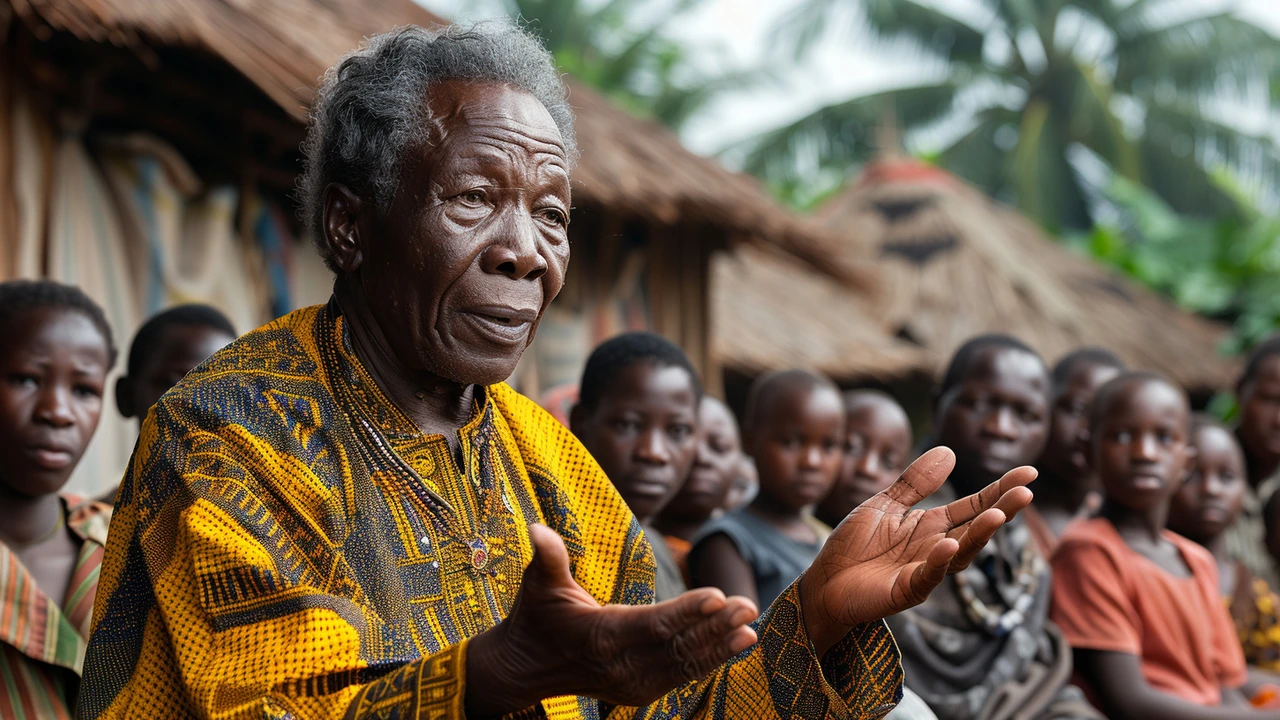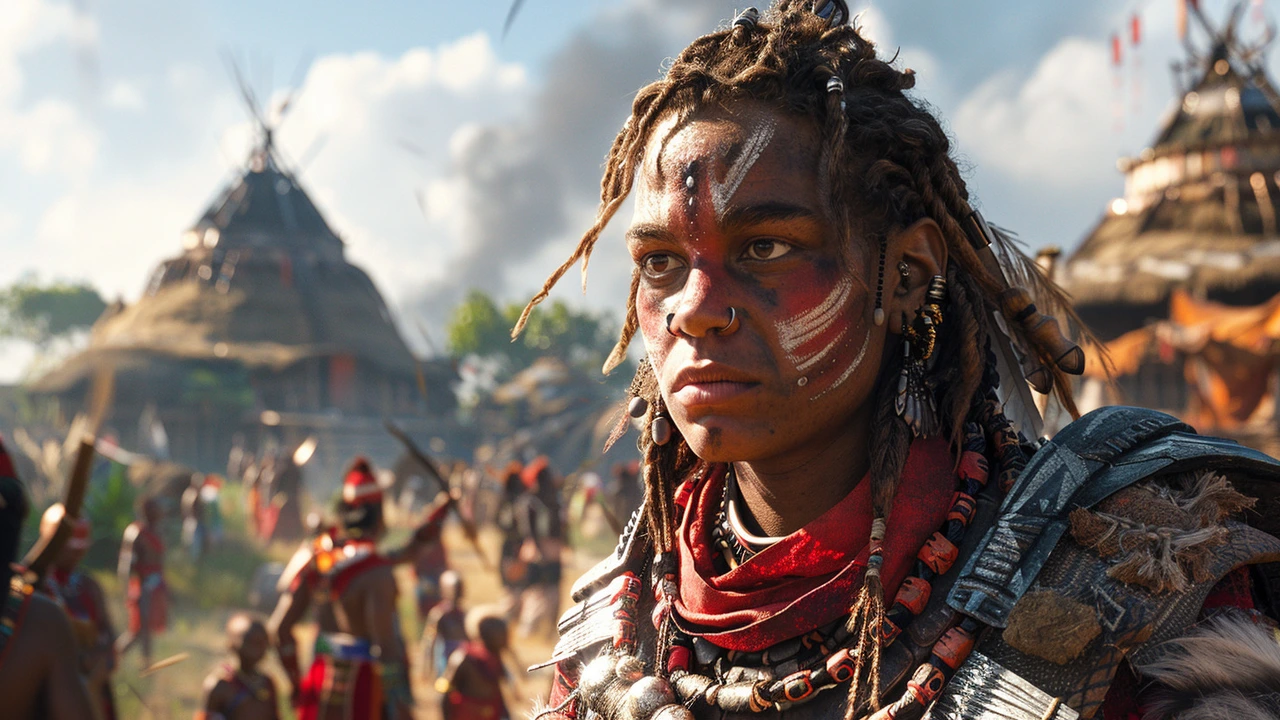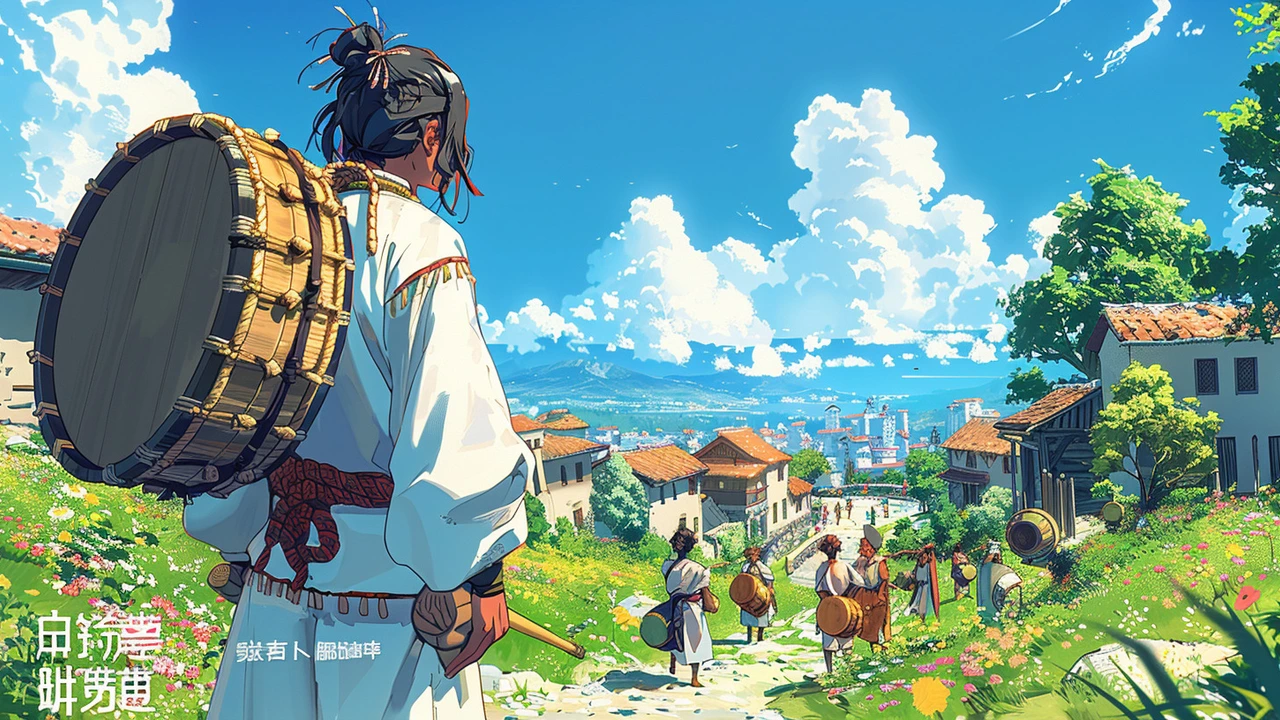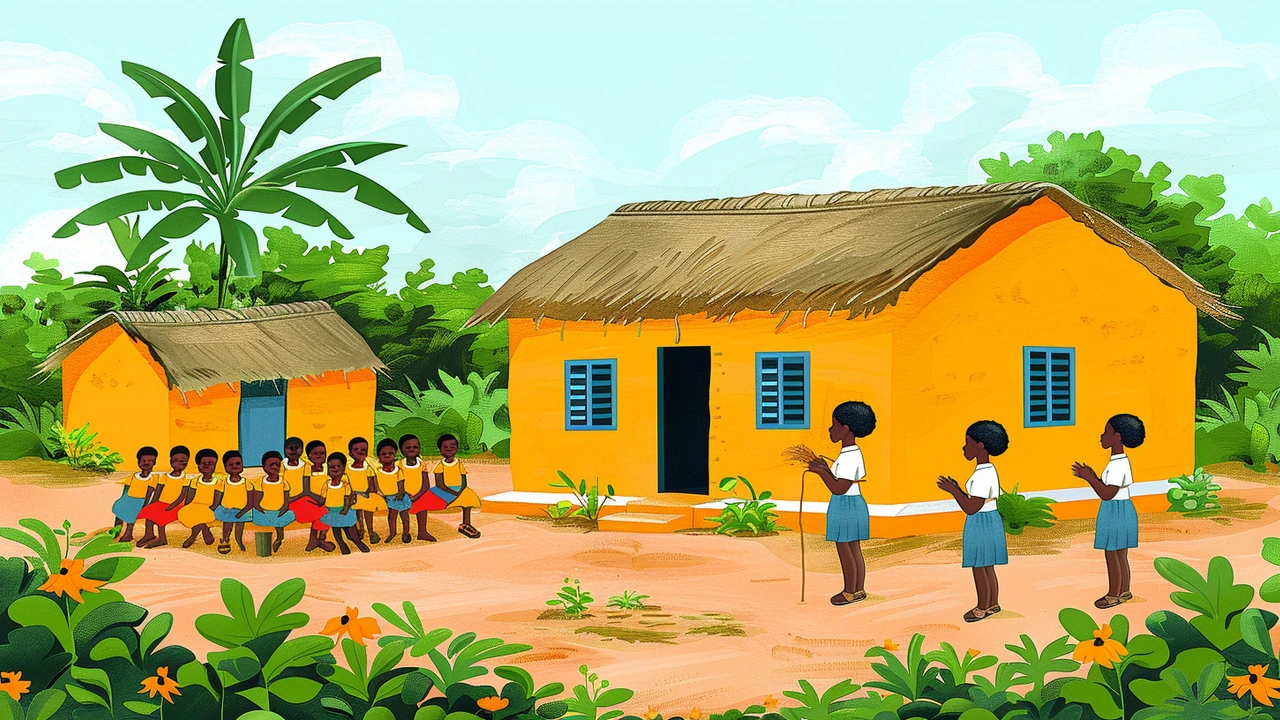The Rungu, a traditional weapon and symbol, holds a revered place in African folklore. Passed down through generations, it is more than just an object; it carries stories, cultural values, and historical significance. Originally designed as a wooden club, the Rungu has been an emblem of power and protection in numerous African tribes.
From its early days as a tool of defense to its role in ceremonial practices, the Rungu's journey through history is a testament to its enduring importance. Its craftsmanship, often ornamented with intricate designs, tells tales of the artisans who crafted them and the warriors who wielded them. The Rungu, thus, serves as a bridge between the past and the present, illustrating the continuity of cultural traditions.
Today, the symbolic meanings attached to the Rungu extend beyond its initial functional use. It is seen in various ceremonial contexts, from rites of passage to storytelling sessions, each instance highlighting its significance in communal life. Understanding the Rungu’s practical uses and modern-day relevance further enriches our appreciation of its role in African folklore.
Historical Origins
The Rungu has a rich and varied history, deeply intertwined with the cultural fabric of East Africa. Primarily associated with the Maasai and Samburu warriors of Kenya and Tanzania, the Rungu's origins date back centuries. It was traditionally made from sturdy wood, often from trees like acacia or grevillea, which provided durability and strength necessary for hunting and combat. The Rungu served as a versatile tool for both men and women within these communities.
Historically, the Rungu wasn't just a weapon; it was a status symbol and a rite of passage. Young boys would be gifted their first Rungu as a sign of maturity, marking their transition from childhood to manhood. This tradition underscored the Rungu's importance not only as a practical tool but also as a cultural emblem of growing responsibilities and community standing. In some tribes, particularly among the Maasai, a warrior's prowess and status were often measured by the craftsmanship and quality of his Rungu.
The Rungu also held symbolic value in various ceremonies and rituals. During significant tribal events, such as initiation rites, weddings, and peace treaties, the Rungu played a pivotal role. It was often decorated with beads and carvings, symbolizing different aspects of the owner's life, achievements, and social standing. These intricate designs were not just for aesthetics but also served as a narrative tool, telling the story of the warrior's lineage and exploits.
The historical context of the Rungu is further enriched by its use in storytelling. Elders would often recount tales of past heroes and battles, with the Rungu acting as a focal point in their narratives. This practice helped preserve the tribe's history and values, passing them down from one generation to the next. The Rungu, therefore, was not just an object but a conduit for cultural transmission and education.
"The Rungu is more than a weapon; it is a symbol of heritage, bravery, and identity," said anthropologist Dr. Jane Smith.
Over time, as colonial influences spread across Africa, the significance of traditional tools like the Rungu faced challenges. However, the Rungu's cultural resilience allowed it to remain a potent symbol. Even in the face of modernization, many African communities continue to honor their heritage by incorporating the Rungu into contemporary practices, ensuring its legacy endures.
Today, museums around the world house these historical Rungus, showcasing their intricate craftsmanship and historical significance. For instance, the British Museum features an impressive collection of African artifacts, including Rungus, emphasizing their role in understanding the continent's rich cultural history. These exhibits provide valuable insights into how such objects were used and revered, helping to educate the global audience about the Rungu's enduring legacy.

Symbolic Meanings
The Rungu holds a deep and multifaceted symbolic meaning within various African communities. It is not merely a weapon but an emblem of authority, wisdom, and cultural heritage. In many tribes, the head of the family or the village elder wields a Rungu as a physical representation of their leadership and responsibility. This use underscores the Rungu’s role as a symbol of power and governance, where its presence commands respect and obedience.
Across different cultures, the Rungu also symbolizes protection. The sight of a Rungu can serve as a deterrent against aggression, reinforcing the idea that the community is safeguarded by strong and vigilant leaders. For instance, among the Maasai people of Kenya and Tanzania, the Rungu is part of the traditional warrior’s arsenal, signifying readiness and resilience. This association with warriors adds another layer to its symbolic narrative, suggesting courage and perseverance.
In ceremonial practices, the Rungu features prominently in rites of passage. During marriage ceremonies, for example, the transfer of a Rungu from the father to the groom signifies the passage of responsibility and the establishment of a new household. This ritual highlights the Rungu's role in marking significant life transitions, embodying the continuity of customs and family heritage. The symbolic handover underscores the trust and expectations placed on the next generation, ensuring traditions are upheld.
According to African folklore expert Paul Thompson, 'The Rungu acts as a tangible link between generations, a tool that reminds us of our responsibilities and the strength we draw from our ancestors.'
Another rich symbolic layer is found in storytelling traditions. The Rungu often appears in folk tales and oral narratives, where it is depicted as a magical object or a gift from the gods, bestowing wisdom and justice upon its possessor. These stories serve as moral lessons, reinforcing the values and principles cherished by the community. They illustrate that the Rungu is more than just a physical object; it is imbued with spiritual and moral dimensions that educate and inspire.
Moreover, the intricate designs and carvings on a Rungu can hold symbolic meanings. These adornments often depict animals, natural elements, or geometric patterns, each with its own connotations. For example, a Rungu adorned with lion motifs may symbolize bravery and leadership, reflecting the admired traits within the community. The craftsmanship itself thus becomes a form of storytelling, where every detail contributes to the rich tapestry of cultural symbolism.
In contemporary contexts, the Rungu maintains its symbolic weight, even as it finds new roles. It is often presented as a gift to dignitaries and visitors, symbolizing respect and goodwill. This modern use underscores the adaptability of traditional symbols, showing that while the world changes, the core values represented by the Rungu remain relevant. These evolving roles ensure that the Rungu continues to be a potent symbol within and beyond African societies.

Practical Uses
The Rungu has always found varied and significant uses in African societies, serving both practical and symbolic roles. Traditionally crafted from robust wood, the Rungu was initially designed as a weapon for defense in combat. Warriors and hunters wielded it to protect their communities and secure food sources. Its effectiveness in close-range combat made it a preferred choice among many tribes.
Beyond warfare, the Rungu also played a crucial role in herding and controlling livestock. Herdsmen used it to guide their cattle, sheep, and goats across the vast plains. Its sturdy design ensured it could withstand frequent use without breaking. This practical application highlights the Rungu’s importance in everyday rural life and its contribution to the economic stability of pastoralist communities.
“The Rungu, often overlooked, is a versatile tool deeply embedded in the cultural and practical life of many African societies,” notes Dr. Miriam Adoyo, a renowned ethnographer specializing in East African cultures.
In addition to these roles, the Rungu was also a symbol of status and authority. Tribal leaders and elders carried ornately decorated Rungus as part of their regalia, signifying their position and power within the community. These versions of the Rungu were often adorned with carvings and beads, reflecting the craftsmanship and artistic expression of the people.
Today, the Rungu continues to be used in traditional ceremonies and rites of passage. It is often presented to young men during initiation ceremonies, symbolizing their transition into adulthood and their readiness to take on responsibilities. In some cultures, it is also used in storytelling sessions, serving as a prop to emphasize important points and engage the audience.
The versatility of the Rungu is further evidenced in its appearance in various sporting events. It is sometimes incorporated into traditional games that test strength and agility, thus preserving its historical legacy and ensuring its continued relevance. Whether in daily tasks, ceremonial functions, or recreational activities, the Rungu's practical applications are both diverse and integral to the cultural fabric of African societies.

Modern-Day Relevance
Today, the Rungu remains a potent symbol in various African communities and extends its significance into modern contexts. While its use in combat has largely diminished, the Rungu still commands respect and holds ceremonial importance. In Maasai culture, for example, it is often presented as a gift during important events such as weddings and other rites of passage. This practice underscores the Rungu’s symbolic role in marking significant life stages and transitions.
Beyond ceremonial uses, the Rungu has found its place in contemporary African art and fashion. Artisans craft ornate versions of the Rungu, which are showcased in art galleries and cultural exhibitions worldwide. These modern interpretations celebrate African heritage and offer a tangible connection to the past, while simultaneously appealing to global audiences interested in the rich cultures of Africa. The aesthetic value of these pieces enhances cultural appreciation and awareness.
Moreover, the Rungu has also become a powerful symbol of empowerment and leadership. In many community gatherings and traditional councils, it is used as a talking stick, emphasizing the speaker's authority and the respect accorded to their words. This modern usage aligns with the Rungu’s historical association with leadership and valor. It is not uncommon to see political leaders and community elders holding a Rungu during public speeches, symbolizing their role as protectors and guardians of their people.
The Rungu’s contemporary relevance extends into popular media as well. It has appeared in films and documentaries that explore African folklore, contributing to a renewed interest in traditional African weapons and their cultural significance. For example, the acclaimed film “Black Panther” featured a scene with traditional African weapons, including the Rungu, highlighting these items' cultural depth and importance.
As noted by Dr. Kofi Annan, an African historian, “The Rungu is a testament to the resilience and enduring legacy of African traditions. It is a symbol of our cultural roots and a beacon for future generations.”
Educational programs and cultural workshops dedicated to African heritage often incorporate the Rungu in their curriculum. These initiatives aim to teach younger generations about the rich history and traditions of their ancestors, promoting a sense of pride and identity. By engaging with these programs, participants gain a deeper understanding of the Rungu’s historical significance and its contemporary applications in their daily lives.
In sports, particularly within the realm of traditional African games, the Rungu is occasionally used in competitive events. Its involvement in such activities demonstrates its versatility and enduring appeal. Participants and spectators alike appreciate its deep-rooted cultural relevance and the connections it fosters within communities.
In essence, the Rungu’s journey from a practical weapon to a multifaceted symbol in modern times exemplifies the dynamic nature of cultural artifacts. It continues to inspire and unify people, bridging gaps between the past and present, tradition and modernity. The Rungu stands as a powerful testament to the enduring spirit and resilience of African cultures.





